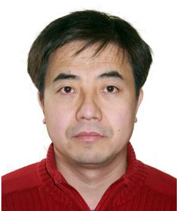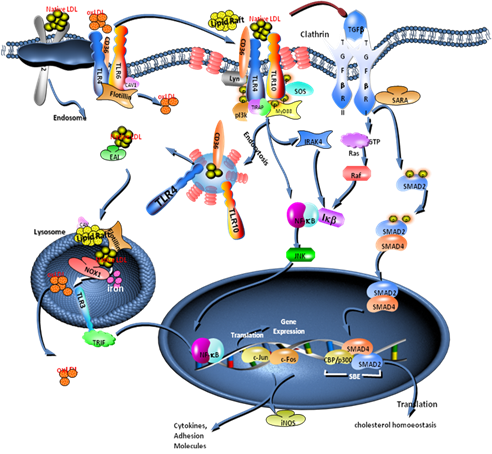
Junzhu Wu, PH.D
E-mail Address: wujunzhu@whu.edu.cn
Office Address: Building No.2, DongHu Road 185#, Wuhan, Hubei, 430071
Position: Professor
Affiliation: Department of Biochemistry and Molecular Biology
Research interests / Specialties: Molecular mechanism of Atherosclerosis
Education and Training
B.S., 1988-1992 Wuhan University, P.R. China
M.S., 1992-1995 Wuhan University, P.R. China
Ph.D., 1998-2001 Wuhan University, P.R. China
Post-doctoral training, 2003-2004 Université de Nancy 1 Henri Poincaré France, 2007 State university of New York at Stony Brook USA
Research Description
We focus on the mechanisms of cell-mediated LDL oxidation. There may be some underlying reasons why those antioxidants were not effective in the clinical therapy but had some significant resistance for LDL oxidation in vitro. Not all LDL need oxidation, in fact, not all LDL have been oxidized. According to this fact, we suggested that LDL oxidation can be named into active and passive oxidation in vivo. The passive oxidation is random oxidation; and the active oxidation may be an immune mechanism of active recognition process. This topic aims to explain the recognition mechanism of LDL active oxidation and the building of LDL oxidation microenvironment using the found research system, then elucidate the biochemical details of LDL oxidation and provide new ideas and solid experimental basis for the prevention and treatment of atherosclerosis in clinical.

Publication list
1.Ping L, Zhang H, Zhai L, Dammer EB, Duong DM, Li N, Yan Z, Wu J*, Xu P*. Quantitative proteomics reveals significant changes in cell shape and an energy shift after IPTG induction via an optimized SILAC approach for Escherichia coli. J Proteome Res. 2013, 12(12):5978-88.
2.Wang J, Song J, Wu J, He C, Xu C, Liu Y. Leukocyte and leukocyte subset counts reveal compensatory mechanisms in coronary heart disease. Clin Chim Acta 2013, 418:79-85.
3. Fan F, Nie S, Dammer EB, Duong DM, Pan D, Ping L, Zhai L, Wu J, Hong X, Qin L, Xu P, Zhang YH. Protein profiling of active cysteine cathepsins in living cells using an activity-based probe containing a cell-penetrating peptide. J Proteome Res. 2012 ,11(12):5763-72.
4.Tan Zhi, Liu Yanhong, Liang Rui, Song Jian, Liu Jinping and Wu Junzhu*. Trans fatty acids influence the oxidation of LDL in ECV304 cells. Eur. J. Lipid Sci. Technol 2012, 114, 880–888.
5.Du Fen , Ping Lingyan , He Chunyan, Yu Hong, Cao Jia and Wu Junzhu*. Involvement of HNP-1 in different oxidation mechanisms in human endothelial cells. Eur. J. Lipid Sci. Technol 2011, 113, 430–435.
6. He C, Huang R, Du F, Zheng F, Wei L,and Wu J*. LDL oxidation by THP-1 monocytes: Implication of HNP-1, SgIII and DMT-1. Clin Chim Acta. 2009,402(1-2):102-106.
7. Wu J, Bonsra AN, Du G. pSM155 and pSM30 Vectors for miRNA and shRNA Expression. Methods in Molecular Biology , 2009,487:205-19.
8. Ranaivoson FM, Kauffmann B, Neiers F, Wu J, Boschi-Muller S, Panjikar S, Aubry1 A, Branlant G and Favier F. The X-ray Structure OF The N-Terminal Domain OF PILB From Neisseria Meningitidis Reveals A Thioredoxin fold. J Mol Biol. 2006, 358(2):443-454.
9. Wu J, Neiers F, Boschi-Muller S, Branlant G. The N-terminal domain of PILB from Neisseria meningitidis is a disulfide reductase that can recycle methionine sulfoxide reductases. J Biol Chem. 2005, 280(13):12344-50.
10. Wu Junzhu, Liu Y, Li X, Chen L, Xia L, Hong J. The relationship between LDL oxidation and macrophage myeloperoxidase activity. Chin Med J (Engl). 2003, 116(5):791-3.
11. Dai Zhao-ming, Wu Jun-zhu*, Li Xiao-Ming, et al. EC, ASMC and macrophage oxidize human low density lipoprotein. Wuhan University Journal of Natural Sciences. 2003, 8 (1A): 130-134.


